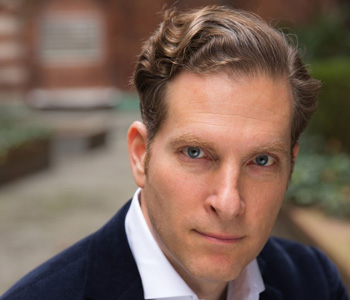Andrew Scull
Madness in Civilization: A Cultural History of Insanity, from the Bible to Freud, from the Madhouse to Modern Medicine
Princeton University Press
432 pages, 6 x 9 inches
9780691166155
Madness is something whose mysteries puzzle us still. The loss of reason, the sense of alienation from the common sense world the rest of us imagine we inhabit, the shattering emotional turmoil that seizes hold of some of us and will not let go: these are a part of our shared human experience down through the centuries and in every culture. Insanity haunts the human imagination. It has drawn the repeated attention of artists and writers, as well as physicians and divines. It reminds us of how tenuous our own hold on reality may sometimes be. It challenges our sense of the very limits of what it is to be human. Even in our own time, definitive answers about the condition remain almost as elusive as ever. The very boundaries that separate the mad from the sane are a matter of dispute.
Madness in Civilization examines the phenomenon of mental disturbance from Ancient Palestine to the present, looking at both Western and non-Western societies and cultures, both medical and lay perspectives, both religious and supernatural accounts and interventions. Madness extends beyond the medical grasp in other ways as well. It remains a source of recurrent fascination for writers and artists, and for their audiences. Novels, biographies, autobiographies, plays, films, paintings, sculpture - in all these realms and more, Unreason continues to haunt the imagination and to surface in powerful and unpredictable ways. All attempts to corral and contain it, to reduce it to some single essence seem doomed to disappointment. Madness continues to tease and to puzzle us, to frighten and to fascinate, to challenge us to probe its ambiguities and its depredations.
I seek to probe this vast territory in all its almost infinite variety and complexity. I’m not interested in easy answers or glib generalizations. I do not celebrate modern psychiatry, but I do try to give it its due, and I try to remain sensitive to the fact that mental troubles are the most solitary of afflictions to those who experience them, but the most social of maladies given their impact on families, on communities, and on societies. My book is enriched by almost a hundred and fifty images, many in color, and reproduced with great fidelity. These don’t merely grace or illustrate the text: they are a central part of the argument I present.
I have worked on the history of psychiatry for four decades now. I originally wrote on the rise of the asylum in Victorian Britain, and the emergence of the modern psychiatric profession there. In later work, I looked at deinstitutionalization and the failures of community care, before turning to an examination of the eighteenth century “trade in lunacy.” Mental patients have been stigmatized and uniquely vulnerable throughout history. Their vulnerability was particularly marked during the late nineteenth and early twentieth century, when psychiatrists branded them as biologically inferior, tainted creatures - a characterization that licensed attempts to exterminate them in Nazi Germany (more than a quarter million of them perished under Hitler), but which also led to a great deal of uncontrolled experimentation on those confined in asylums. Having written extensively on the eighteenth century through the present, I next turned to looking at a particular variety of psychiatric disorder, hysteria, and traced its place in Western culture from ancient times to its apparent disappearance in the late twentieth century, suggesting that reports of its death perhaps misunderstood and misconstrued contemporary realities.
So I have worked on this general field for a very long time now, and have drawn on the knowledge I have accumulated over many years in writing my latest book. I have long thought that we lacked a good synoptic account of the multitude of ways in which individuals and societies have sought to cope with the problem of Unreason. Any such account, in my view, had to see mental disturbance as an absolutely central and all-but-universal aspect of human experience. More than that, our collective encounters with mental disorder have inspired painters, sculptors, composers, dramatists, poets, novelists, and filmmakers to attempt to capture the essence of what it means to be disturbed, deranged, or distracted. Indeed some of these figures have themselves suffered from various forms of mental distress. I love all these arts, and have sought to show how much materials like these can help us explore the place of madness, and to place it firmly within civilization, not as something alien to it.
If a reader wanted to browse my book, a number of strategies suggest themselves. The introductory chapter is quite brief, but sets out the range of topics I plan to write about, and makes plain that I don’t romanticize mental illness, nor treat it as some sort of social construction. Two other possibilities suggest themselves: either to browse the hundred and forty and more illustrations, which given a vivid sense of the issues the book engages with; or to choose a particular topic that is of interest, and see what I have to say about it: the place of madness in opera or the movies, for instance; or its multifarious relationships with religious ideas; or how Chinese or Islamic culture approached the subject many centuries ago. Dipping into the pages on any of these subjects – easy to do either through the table of contents or the index, will quickly give a would-be reader of the nature of my approach and the arguments I develop.
Mental illness is something that touches all of us, directly or indirectly. It is something still poorly understood, and for which our treatments are mostly palliative at best. I hope my book can contribute to a deeper understanding of the myriad ways in which societies have sought to make sense of and cope with mental illness, of the challenges it represents, and the stigma that attaches to those who suffer from it, adding to and augmenting their misery. But I also think readers will find some more positive stories and meanings, not least in the great works of art and literature that find in madness their inspiration and their raison d’être.




We don't put paywalls. We don't distract you with ads. We don't sell your data.
Please help to keep this running!